In the complex world of construction, few elements are as vital and as challenging as subcontractor management. Subcontractors bring specialized expertise, labor, and technical knowledge that make large-scale construction projects possible. Whether it’s electrical work, plumbing, HVAC installation, or finishing details, subcontractors are the backbone of modern construction execution.
However, managing multiple subcontractors efficiently is no simple task. Construction projects often involve dozens of trades working simultaneously under tight deadlines and budgets. Each subcontractor has their own team, methods, and communication habits, creating a web of coordination that must be expertly managed to avoid delays, cost overruns, and safety risks.
This makes efficient subcontractor management not just a logistical necessity but a strategic skill that directly impacts the success of any project. Done right, it ensures quality, safety, and profitability. Done poorly, it can lead to miscommunication, conflicts, and costly rework.
In this comprehensive guide, we’ll explore everything you need to know about managing subcontractors effectively from planning and prequalification to performance tracking, communication, and risk management.
Understanding the Role of Subcontractors in Construction

Subcontractors are independent specialists hired by the main contractor (or general contractor) to perform specific parts of a construction project. Unlike direct employees, subcontractors work under a contractual agreement that defines their scope, timelines, deliverables, and payment terms.
Common Types of Subcontractors Include:
- Structural and framing specialists
- Electrical and mechanical (MEP) contractors
- HVAC technicians
- Plumbing and drainage teams
- Roofing and waterproofing experts
- Finishing subcontractors (painting, flooring, joinery)
- Landscaping and external works crews
These professionals provide technical depth and flexibility that general contractors rely on. By outsourcing specialized tasks, contractors can focus on coordination and project management instead of maintaining large in-house teams for every discipline.
However, this decentralized approach also brings challenges: ensuring quality consistency, aligning schedules, managing payments, and keeping communication flowing across multiple independent parties.
Also read: 10 Reasons to Choose Karyanusa Asia for Your Bamboo Architecture Project in Bali
The Importance of Efficient Subcontractor Management
Effective subcontractor management is about more than tracking invoices or schedules—it’s about integrating multiple moving parts into one cohesive system.
When managed efficiently, subcontractors become valuable partners who deliver quality work on time and within budget. But when coordination fails, even minor issues can cascade into serious project delays or disputes.
The Key Benefits of Strong Subcontractor Management Include:
- Improved Project Timelines
Coordinated scheduling ensures every trade knows when to start, where to work, and what dependencies exist before and after their phase. - Consistent Quality Control
Clear standards and inspections ensure subcontractors meet contractual and regulatory quality benchmarks. - Enhanced Cost Control
Monitoring subcontractor productivity and progress helps detect scope creep, waste, and payment discrepancies early. - Better Safety and Compliance
Centralized safety policies, training, and supervision minimize accidents and ensure adherence to regulations. - Reduced Risk of Disputes
Transparent contracts, documentation, and communication reduce misunderstandings and protect all parties legally. - Stronger Relationships and Collaboration
Reliable subcontractors become long-term partners who improve efficiency and trust across multiple projects.
In short, subcontractor management is the backbone of construction project control, connecting design intent, execution, quality, and safety.

The Stages of Subcontractor Management
Efficient management follows a structured process throughout the project lifecycle. Let’s break it down step by step.
1. Prequalification and Selection
Before hiring, contractors must carefully evaluate subcontractors to ensure they are capable, reliable, and financially stable.
Key Prequalification Criteria:
- Experience and past performance: Similar projects completed successfully.
- Financial stability: Ability to handle material purchases and payroll during the project.
- Licenses and certifications: Compliance with local laws and safety requirements.
- Workforce capacity: Availability of skilled labor for the project timeline.
- Safety record: History of incidents or compliance issues.
- Reputation and references: Feedback from previous general contractors.
A structured prequalification questionnaire helps collect this data systematically. Modern digital platforms even automate risk scoring for quicker evaluations.
2. Contract Negotiation and Agreement
Once selected, a well-drafted subcontract agreement defines the relationship clearly and legally.
Essential Clauses to Include:
- Scope of work: Exact deliverables, materials, and quality standards.
- Schedule: Start and completion dates, milestones, and penalties for delays.
- Payment terms: Progress payment schedule, retention, and change order procedures.
- Insurance and indemnity: Worker’s compensation, liability coverage, and protection against third-party claims.
- Safety and compliance: Obligations to follow site safety plans and local regulations.
- Dispute resolution: Arbitration or mediation procedures to handle disagreements.
A precise contract eliminates ambiguity and ensures accountability across all trades.
3. Onboarding and Orientation
Before work begins, subcontractors should go through a structured onboarding process to align them with the main contractor’s standards.
Typical Onboarding Steps Include:
- Site orientation and safety induction.
- Review of project drawings and specifications.
- Explanation of reporting procedures and communication protocols.
- Familiarization with digital project management tools (BIM, scheduling software, etc.).
- Issuance of site passes, safety gear, and access permissions.
Proper onboarding ensures that all subcontractors operate under a unified understanding of expectations.
4. Scheduling and Coordination
Scheduling subcontractors efficiently is one of the most critical—and difficult—tasks in construction. Each trade depends on the completion of another.
For example, electrical and plumbing rough-ins must be completed before walls are closed by drywall installers.
Tools and Practices for Effective Scheduling:
- Critical Path Method (CPM) or Gantt charts to visualize dependencies.
- Lookahead schedules for weekly coordination.
- Digital construction platforms (e.g., Procore, Autodesk Build) for real-time updates.
- Regular coordination meetings between trade foremen and the project manager.
When done properly, scheduling avoids overlaps, idle time, and resource conflicts.
5. Communication and Collaboration
Clear communication between subcontractors, site supervisors, and project managers is the lifeline of any project.
Key Practices:
- Daily or weekly coordination meetings.
- Shared digital dashboards for progress tracking.
- Standardized forms for RFIs (Requests for Information) and change orders.
- Instant notifications for schedule changes or safety alerts.
Cloud-based collaboration tools ensure that updates are shared in real time, preventing outdated information from causing mistakes on site.
6. Quality Assurance and Inspections
Maintaining high-quality standards requires systematic monitoring and documentation.
Quality Management Practices Include:
- Pre-installation meetings to clarify expectations.
- Inspections at key milestones.
- Use of digital quality checklists and photo documentation.
- Tracking of nonconformances and corrective actions.
- Clear sign-offs before payment release.
Consistency in quality ensures that the final project meets design intent and client satisfaction.
7. Performance Monitoring and Reporting
Continuous monitoring ensures subcontractors stay aligned with project goals.
Performance Metrics to Track:
- Productivity (output per worker or per day).
- Schedule adherence (on-time completion of milestones).
- Safety compliance (number of incidents or violations).
- Rework rate (percentage of tasks needing correction).
- Financial performance (budget vs. actual cost).
Regular reporting—weekly or biweekly—helps identify problems early and enables corrective action.
8. Payment Management
Fair and transparent payment builds trust and ensures subcontractors remain motivated.
Best Practices:
- Tie payments to verified progress milestones.
- Retain a small percentage (retention) until work passes final inspection.
- Require all invoices to include progress photos, approved work orders, and materials receipts.
- Automate invoice verification through project management software to avoid disputes.
Clear documentation protects both the contractor and subcontractor from misunderstandings.
9. Risk and Safety Management
Subcontractors must comply with the project’s safety plan, but general contractors are ultimately responsible for ensuring a safe site.
Key Elements of Safety Management:
- Mandatory safety orientation for all subcontractor workers.
- Daily toolbox talks and hazard briefings.
- PPE (Personal Protective Equipment) enforcement.
- Site inspections to identify unsafe behavior or conditions.
- Incident reporting and root cause analysis.
Safety culture should be shared across all subcontractors—not treated as an afterthought.
3.10 Closeout and Evaluation
At the end of a project phase—or upon completion—each subcontractor should undergo a closeout evaluation.
This includes:
- Final inspections and punch list completion.
- Verification of as-built drawings and O&M (operation and maintenance) manuals.
- Release of retention payment.
- Performance evaluation for future qualification.
Documenting subcontractor performance helps build a database of trusted partners for future projects.
Tools and Technologies for Efficient Subcontractor Management
Digital transformation is revolutionizing how contractors manage their networks of subcontractors.
a. Construction Management Platforms
Software such as Procore, Autodesk Construction Cloud, and PlanGrid allow centralized tracking of schedules, budgets, documents, and RFIs.
b. BIM (Building Information Modeling)
BIM provides a shared 3D model where subcontractors can visualize their scope, detect clashes, and plan installations more efficiently.
c. Cloud-Based Scheduling and Collaboration Tools
Cloud systems ensure everyone works from the same version of schedules and drawings, reducing miscommunication.
d. Mobile Field Apps
Enable real-time reporting of progress, safety incidents, and inspection results directly from the jobsite.
e. Digital Safety and Compliance Systems
Track certifications, toolbox talks, and incident reports electronically for better oversight.
f. Data Analytics
Analyze subcontractor performance trends across projects to identify strengths, weaknesses, and cost optimization opportunities.
Technology not only improves visibility but also transforms management from reactive to proactive, identifying risks before they become problems.
Common Challenges in Subcontractor Management
Despite the best systems, challenges remain:
a. Miscommunication
Different subcontractors interpret drawings or specifications differently. Clear documentation and centralized communication are essential.
b. Scope Creep
Without strict controls, subcontractors may extend beyond agreed tasks, causing disputes or unapproved costs.
c. Schedule Conflicts
Overlapping work areas or uncoordinated trades can create bottlenecks.
d. Labor Shortages
Unforeseen worker shortages can disrupt schedules and quality.
e. Quality Inconsistencies
Different subcontractors have varying skill levels, requiring strong supervision and standardized inspection protocols.
f. Payment Delays
Slow approvals or unclear progress verification can harm subcontractor relationships and morale.
Recognizing these risks early allows managers to build preventive systems rather than firefight later.
Best Practices for Successful Subcontractor Management
- Build Long-Term Relationships
Treat subcontractors as partners, not just vendors. Collaboration fosters loyalty and efficiency. - Standardize Processes
Use consistent templates for contracts, reports, and schedules to reduce confusion. - Implement Clear Communication Channels
Use centralized digital platforms to ensure everyone accesses the same data. - Hold Regular Coordination Meetings
Weekly updates help synchronize progress and address challenges immediately. - Use Performance-Based Contracts
Link payments to measurable milestones and KPIs for accountability. - Invest in Training
Support subcontractors in adopting digital tools and safety protocols. - Emphasize Safety Culture
Reward safe practices and make safety a shared responsibility. - Monitor and Evaluate Continuously
Keep detailed records and analyze subcontractor performance post-project.
By institutionalizing these practices, companies can create a scalable, repeatable framework for managing subcontractors across multiple projects.
Also read: 7 Highly Recommended Bali Contractors for Foreign Investors in 2025
The Future of Subcontractor Management
The future is digital, data-driven, and collaborative. Several trends are reshaping how subcontractor management will evolve:
a. Integrated Digital Ecosystems
All project stakeholders—from owners to subcontractors—will operate in shared cloud environments, eliminating data silos.
b. Predictive Analytics
AI will analyze performance data to forecast potential delays or risks, enabling early intervention.
c. Blockchain for Contract Management
Smart contracts could automate payment release once verified milestones are met, enhancing transparency.
d. Robotic and Modular Construction
As modular and robotic systems expand, subcontractors will focus more on specialized installation and digital integration roles.
e. Sustainability-Driven Procurement
Future subcontractor selection will prioritize environmental responsibility and green construction practices.
The contractors that embrace these trends will gain a significant competitive edge in delivering projects faster, safer, and more profitably.
Conclusion
Efficient subcontractor management is the heart of modern construction success. It transforms complexity into coordination, risk into reliability, and competition into collaboration.
By combining clear contracts, structured processes, open communication, and digital technology, contractors can unlock higher productivity, better quality, and stronger partnerships.
The most successful projects aren’t those with the lowest bids or fastest schedules—they’re the ones where every subcontractor works as part of a unified team, aligned by clear goals and mutual trust.
In today’s competitive construction environment, mastering subcontractor management isn’t just an operational skill—it’s a strategic advantage that defines who leads the future of the industry.

Rafini
Rafini is a seasoned marketing sales expert with over 15 years of experience in the hospitality industry, specializing in commercial renovation in Bali. Having honed her skills at renowned establishments like Accor and Anantara, she possesses a deep understanding of client needs and market dynamics.
Currently serving as a Regional Manager, Rafini excels in driving sales strategies and fostering strong relationships to enhance brand visibility and profitability across her region.





